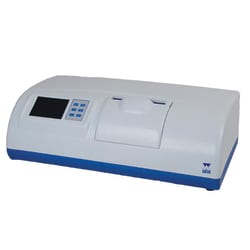Polarimeters
Instruments used to measure the angle of rotation caused by passing polarized light through an optically active substance.
Polarimeters are used in the chemical, pharmaceutical, and food industries for monitoring quality, purity, and concentration and indicating the progress of reactions and conversions.
What Are Polarimeters?
Polarimeters are digital or manual instruments that generate polarized light and measure the angle of left or right rotation when that light passes through a chiral substance.
Chemical substances that are optically active (chiral) will rotate light passed through them to the left (counter-clockwise) or right (clockwise). The angle of the rotation is known as the observed angle.
Many chemicals form stereoisomers, which means that molecules may have the same molecular formula and bonded atom sequence but differ in their three-dimensional structure and orientation.
How Are Polarimeters Used?
Polarimeters can help to identify the isomer as a levo-isomer (rotates polarized light to the left) or a dextro-isomer (rotates polarized light to the right).
The rotation is proportional to the concentration of the isomers in a solution and is used to determine the concentration of enantiomer in pure samples. Polarimetry may also be used to determine the specific rotation that characterizes a new substance or to identify an “unknown” chemical sample.
Concentration and purity are important factors in food, beverage, and pharmaceutical industries. For example, a common over-the-counter pain medication has a stereoisomer that has no analgesic effect and also causes liver poisoning.
Polarimeters are used to assess:
- Steroids
- Diuretics
- Antibiotics
- Narcotics
- Vitamins
- Analgesics
- Amino acids
- Essential oils
- Polymers
- Starches
- Sugars


